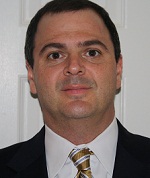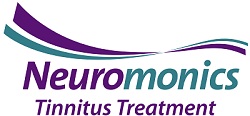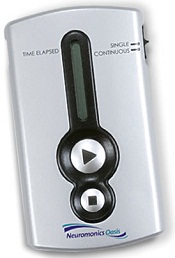Interview with Curtis Amann, Director of US Sales, Neuromonics

Curtis Amann
CAROLYN SMAKA: Today I'm speaking with Curtis Amann, Director of U.S. Sales for Neuromonics. Curtis, would you tell me about your background and your role at Neuromonics?
CURTIS AMANN: As Director of U.S. sales for Neuromonics, I also oversee our marketing and public relations functions. I'm the primary conduit for providers for anything related to the sale and marketing of our product. I have a background in medical sales, and I've been with Neuromonics for coming up on five years now.
SMAKA: Can you give an overview of Neuromonics?
AMANN: Sure. Neuromonics was founded in Australia in 2001. We manufacture and distribute the only U.S. FDA-cleared, patented, customized and clinically proven medical device designed for long-term, significant relief of tinnitus. The technology and the basis for the device, and the Neuromonics Tinnitus Treatment, goes back to the early '90s when Paul Davis, the founder and creator of the technology, was working on his Ph.D. He was interested in how music could be used to help treat tinnitus sufferers, and the research and technology that followed became the foundation for the company. So Neuromonics is not a new company. We've been at this quite a while, and we've learned quite a bit from our experiences along the way.
Neuromonics has been in the U.S. since 2006. We've trained more than 600 providers at clinics here in the United States, and treated approximately 6500 patients (here in the United States). Worldwide, we've treated 7,500 - 8,000 patients. These experiences have created an extensive clinical and research knowledge base that we can offer to clinicians - one which no other tinnitus product or company can. It's unmatched in the industry.
SMAKA: Oasis is your primary product, correct?
AMANN: Yes. The Neuromonics Oasis is a customized music player that is specifically tailored for each patient's individual hearing profile. That customization is one of the things that make the device unique. When the patient goes through an audiological or tinnitus assessment in the clinic, the trained audiologist then takes that information and uses it to program the Oasis. That way, the treatment delivers patient-specific, high-frequency stimulation.
Tinnitus consists of an audiological component, a neurological component, and an emotional component. At Neuromonics, we believe that all three components need to be addressed for treatment to be impactful, and the Neuromonics Tinnitus Treatment, with the Oasis device, does just that.
It addresses the audiological component by using the audiological results to customize the device.
It addresses the neurological component by providing input to areas of the brain that are being deprived of stimulation - typically due to hearing loss, which is a very common attribute of the tinnitus sufferer. That auditory input is part of the bigger process of impacting neurological change in the patient through the process of desensitization, which is ultimately what allows a patient to be less impacted by their tinnitus.
Then you have the emotional component. What typically happens with tinnitus patients is that they hear their tinnitus, they become bothered by it, and then their bodies respond negatively. This reaction can result in a heightened state of anxiety, frustration, sleeplessness, and a host of other co-morbidities. In order to deal with the emotional aspect of tinnitus, the Neuromonics Tinnitus Treatment gradually exposes patients to their tinnitus perception in a controlled environment, using music, allowing them to desensitize to it over time.
There is great deal of evidence that shows how the body responds to music. Given the direct path that music has to our limbic system, and its ability to influence physiological change in the body, music turns out to be the perfect delivery vehicle for a tinnitus treatment. The Oasis plays calming, relaxing music that is comfortable and easy to listen to. It enables us to break that negative association with the tinnitus and begin to desensitize the patients.
That's a general overview of the idea behind how the Oasis works with the Neuromonics Tinnitus Treatment. More technically, we can talk about systematic desensitization. It's a common approach used to treat phobias, gradually exposing someone to a phobic stimulus in a controlled environment so they become less and less bothered by it. That's what the Oasis and Neuromonics Tinnitus Treatment do. Using music as the primary delivery vehicle, we are able address the emotional component and help patients become less bothered by their tinnitus.
SMAKA: What you're saying about the various components of tinnitus will ring true - no pun intended - to professionals who see tinnitus sufferers. If it were simply an audiological issue, we'd address it with an audiological device, and everyone would be happy. It's not that simple, which may be one of the reasons why some people are hesitant to kind of jump right into tinnitus management in their office.
AMANN: Exactly. With tinnitus, as with a lot of health issues, patients and clinicians alike are looking for instant gratification, or a "magic pill." We want to take something today and to feel better tomorrow, without having to work at it. The reality is that it takes three critical things to help a typical tinnitus patient. First, you need some sort of ear-level intervention or sound therapy. Second, you need a clinician who understands the tinnitus patient and is willing to work with, and help, him or her. Third, and equally important, is that you need a patient who wants to get better and is willing to do his or her part in the process to get better.
If you have those three things, Neuromonics has proven that the Oasis and Neuromonics Tinnitus Treatment work.
SMAKA: As you know, there have been many things over the years claiming to treat tinnitus. Tell me more about the evidence and the research behind Oasis, such as clinical validations, etc.
AMANN: I think looking to the data is incredibly important when you're dealing with a tinnitus patient. As you mentioned, over the years there have been a lot of snake oil-type treatments on the market to treat tinnitus patients - supplements, vitamins, or whatever the latest flavor of the month is. Nothing's really worked.
In our industry - or in any medical industry - the best source of data is a peer-reviewed published clinical trial. Neuromonics has a great body of work in this regard. We have four different clinical trials that have been published in peer-reviewed journals;each has included a wide cohort of patients. The data shows that over time, anywhere between 86 to 90 percent of Neuromonics patients are able to achieve a clinically significant reduction in their tinnitus disturbance and their tinnitus awareness, and that's what we're going for.
As you know, there's no cure for tinnitus. So what we at Neuromonics aim to do is to first reduce how often the patient is aware of their tinnitus. Second, when the patient is aware of the tinnitus, we want to reduce the level of disturbance associated with that awareness. So there's a two-fold goal: reduced awareness of tinnitus and reduced disturbance. Our clinical data and the evidence show repeatedly that we're able to provide that for our tinnitus patients over the course of time.
A summary of the evidence with the full references can be found here.
SMAKA: You say "over the course of time." The treatment is part of a clinical process.
AMANN: Right, and that's an important point. At Neuromonics, our goal is to provide an education in this process for the tinnitus clinician. We want to teach those professionals interested in treating tinnitus how to identify good candidates, how to counsel them properly, and how to maximize the potential for success for each patient. It is important to know that the entire treatment process takes six to eight months in order to achieve maximum benefit. While that may seem like a long time, most patients are able to achieve clinically significant benefits in as a little as two months.
We provide a comprehensive education about the treatment process. This means not just understanding the underlying neurophysiological processes, but also the background into various tinnitus treatments, and as I mentioned, how to identify good candidates - not just for our device, but for any type of intervention. Once a provider identifies the candidates, we use our body of evidence to train those clinicians on how they can maximize the patient's chance for a successful outcome. We offer a comprehensive training program that they can access live online, or complete in a self-paced manner via web-based courses or DVDs. There are a lot of different ways that a clinician can get this training.
In the past, we spent a lot of time in clinics face-to-face doing this training. Now, we've made it more readily accessible so that any audiology professional with a vested interest in treating tinnitus patients can get this training.
SMAKA: About what percentage of audiology practices out there treat tinnitus?
AMANN: Well, I would estimate approximately 10 to 15 percent of audiology practices are really committed to treating tinnitus patients.
Tinnitus patients have a poor reputation. Every audiologist out there has had a very frustrating experience with a few tinnitus patients, and maybe a poor outcome with treatment. What's overlooked is that these experiences constitute a very small number in the big picture, and that a large percent of tinnitus patients are able to achieve success. It can be incredibly rewarding to be able to give patients their lives back through successful treatment. What we need to remember in that it's not that difficult for professionals to treat tinnitus if they take the time to prepare and educate. At Neuromonics, we're committed to providing the training and the tools to help audiologists deliver positive outcomes to their patients with tinnitus.
SMAKA: For professionals who aren't managing tinnitus in their practices, or those that are and maybe want some further training or more information on Oasis, where would you direct them?
AMANN: I would direct them to the Neuromonics customer service number, 866-606-3876, to get in touch with one of our Clinical Specialists or Clinical Education Managers. They can help get the professional registered for the appropriate training courses and start them on their way. It's really a simple process, and if nothing else, there are different levels that clinicians may want to participate in. For instance, if someone doesn't want to be the person who makes tinnitus treatment a main focus of the practice, it is worth an hour or two of time to at least get a baseline of education and understanding. That will allow the clinician to refer properly to a different source.
SMAKA: Thanks Curtis. It seems like Neuromonics has made it really easy for professionals to get up to date, whether or not they want to offer tinnitus treatment in their practices. I appreciate your time today.
AMANN: Thanks, Carolyn.
For more information about Neuromonics, visit https://neuromonics.com/ or the Neuromonics Web Channel on Audiology Online.

